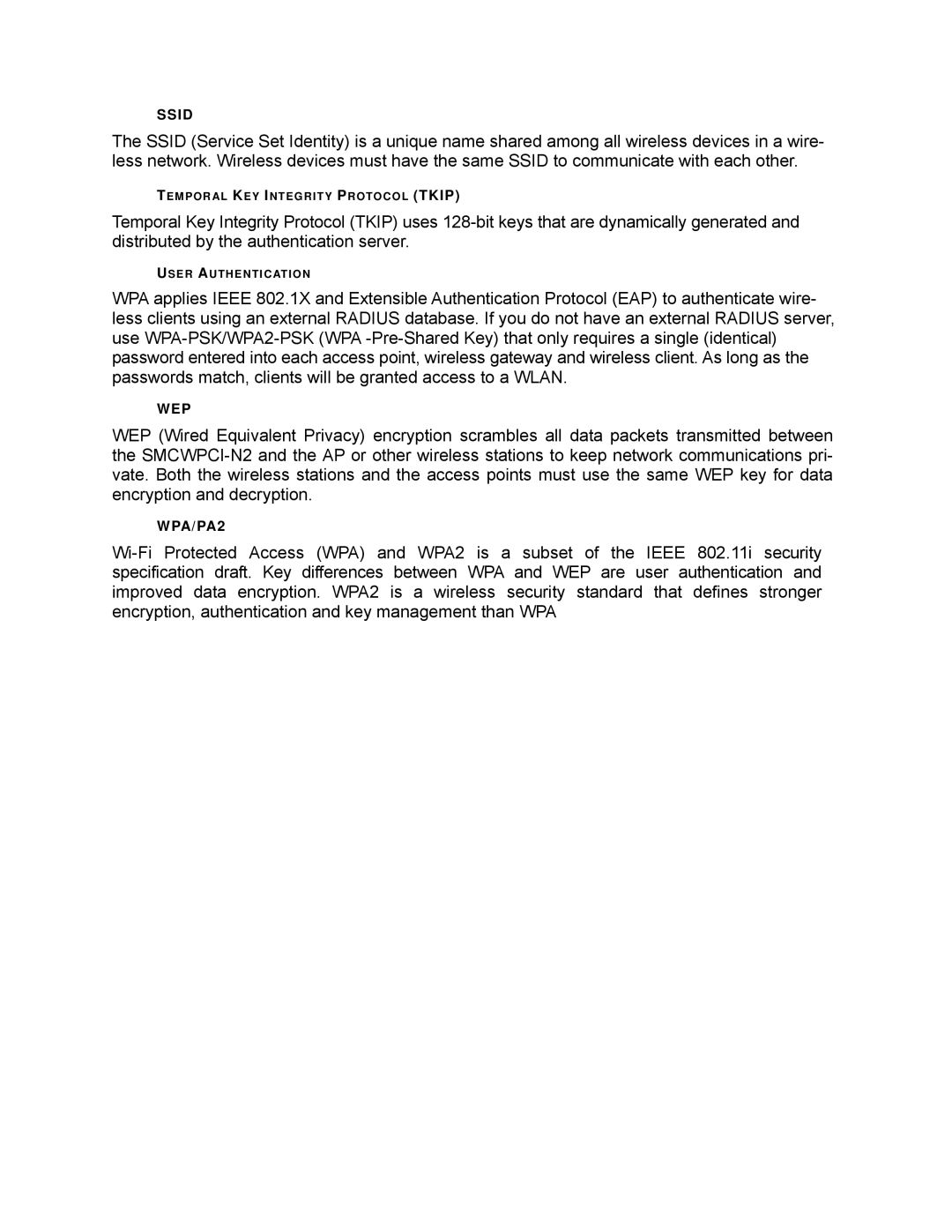SSID
The SSID (Service Set Identity) is a unique name shared among all wireless devices in a wire- less network. Wireless devices must have the same SSID to communicate with each other.
TEMPORAL KEY INTEGRITY PROTOCOL (TKIP)
Temporal Key Integrity Protocol (TKIP) uses 128-bit keys that are dynamically generated and distributed by the authentication server.
USER AUTHENTICATION
WPA applies IEEE 802.1X and Extensible Authentication Protocol (EAP) to authenticate wire- less clients using an external RADIUS database. If you do not have an external RADIUS server, use WPA-PSK/WPA2-PSK (WPA -Pre-Shared Key) that only requires a single (identical) password entered into each access point, wireless gateway and wireless client. As long as the passwords match, clients will be granted access to a WLAN.
WEP
WEP (Wired Equivalent Privacy) encryption scrambles all data packets transmitted between the SMCWPCI-N2 and the AP or other wireless stations to keep network communications pri- vate. Both the wireless stations and the access points must use the same WEP key for data encryption and decryption.
WPA/PA2
Wi-Fi Protected Access (WPA) and WPA2 is a subset of the IEEE 802.11i security specification draft. Key differences between WPA and WEP are user authentication and improved data encryption. WPA2 is a wireless security standard that defines stronger encryption, authentication and key management than WPA
